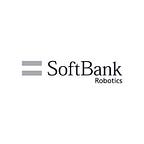How Brick and Mortar Businesses Can Get The Most Out of The Internet of Things (IOT)
By 2020, there will be almost 31 billion Internet of Things (IoT) devices worldwide, and IoT devices will generate a full 10 percent of all globally registered data. As more decision makers are beginning to realize the potential of IoT-enabled applications, IoT is being used increasingly to create new revenue streams, transform operations, support marketing efforts, and improve the customer experience.
While IoT strategies have brought incredible value to industries like manufacturing and clean energy, where the AI-enabled analysis of IoT data drives the creation of predictive models and the automation of on-demand maintenance, there is incredible opportunity for consumer-oriented businesses with a physical presence to transform their revenue streams and improve the customer experience with an IoT device strategy.
IoT Gives Physical Locations An Edge
With the majority of US shoppers still preferring to do most of their purchasing in-store, and customer experience becoming a top priority for healthcare, hospitality and banking, it is becoming increasingly critical to maximize the investments made in a physical space.
IoT gives businesses with physical locations (banks, hospitals, hotels, retailers, etc.) the unique opportunity to benefit from the digitization of the physical world. IoT-enabled devices — like smart shelves, sensors, robots, and more — can bring the same kinds of analytics, access and control that the online world provides to physical experiences, providing customer insights about behavior and preferences that are only achievable through digital marketing channels today.
By bringing the benefits of online marketing to brick-and-mortar locations through IoT devices that can collect new types of customer data, businesses gain more control over the customer journey than was ever thought possible in stores.
With IoT devices, businesses could understand what signage drives the most customers into stores, what layout is the most effective for driving sales, or what message engages the most new customers. This information — and more — would enable companies to provide truly personalized and natural real-world experiences, and develop location-specific marketing strategies that ensure every brick-and-mortar investment is performing optimally.
Tips for IoT Success
When IoT devices are used to better understand and optimize the customer experience, they are a critical tool for businesses to leverage. An IoT strategy can help businesses track and understand how customers behave from the time they leave their device to go into the store, up until the moment when they return to review the product. This can help businesses understand and improve self checkout, reduce wait times, facilitate layout optimization, run inventory counts, drive smarter customer-relationship management solutions, and more.
If you are considering launching an IoT in-store strategy to drive a superior customer experience, here are some suggestions for success.
1. Start Small, Than Build
With IoT, the sky is the limit. Cameras, infrared sensors, beacons, personalized ads, robots, music queues, smart shelves, guidance lights, smart POS, and more can all offer unique opportunities for optimization. But to drive the success and adoption of a comprehensive strategy, it’s best to start with something small that can deliver immediate customer value, then build from there.
Starting small helps you drive maximum ROI and adoption in the long run, but in the short term, it makes change management simpler; by starting small, you have more time to upgrade corresponding technology and processes without overwhelming your existing staff.
2. Consider The Network Effect
When trying to get the most out of IoT, it’s important to think about how the devices can work together to multiple the impact of the IoT ecosystem.
For example, imagine a hotel with a friendly robot greeter that checks customers in, provides directions to the room, issues a card, and personally identifies the guest. On its own, that robot is a neat trick. But imagine if the data from that robot was connected to a variety of experiences throughout the hotel.
Ordering at the restaurant could be managed through an online ordering process that would understand the guest’s food preferences and dietary restrictions. The room’s temperature, lighting, and music could be set to the customer’s specifications, based on integrated recognition of the customer’s prior visits. The entire experience could be customized to the customer’s specific needs, creating an experience that feels like it’s built with them in mind. This level of personalization can be a true difference-maker.
3. Design Your Ecosystem With the Back End In Mind
Given the importance of the network effect, it’s somewhat ironic that one of the biggest challenges of launching a connected devices strategy is making the data work together on the backend. Yet today, up to 60% of the value generated by IoT devices are left uncaptured because there is no way to look at the data together on the backend.
As part of your launch strategy, consider how information from each device will be captured, how it will be tagged, whether it will be captured in batches or in real time, and how will you leverage additional technologies, like AI and machine-learning, to make sense of it all.
4. Find a Trusted Partner
To launch a truly connected IoT strategy, it can be helpful to find an experienced technology partner to help you think through some of these challenges, so you’re not scrambling to “fix” things once you’ve launched.
A true partner will have a strong understanding of the challenges and opportunities of IoT, and will work side-by-side with you to plan, develop and implement a solution that helps you maximize the potential of a network of interconnected devices.
What are the benefits of this for businesses? Stay tuned for our next post, where we will share the types of data that can be captured from IoT devices in a physical location, and how that data can be used to help businesses better understand their customers, and develop more effective paths to success.
